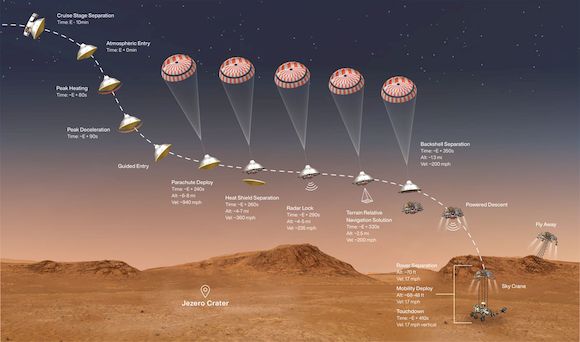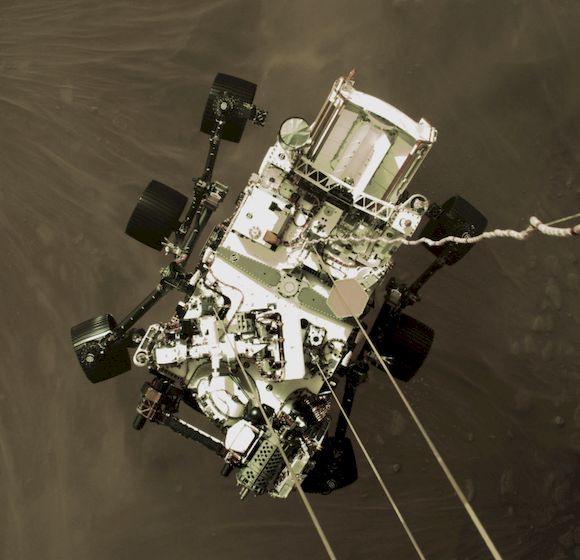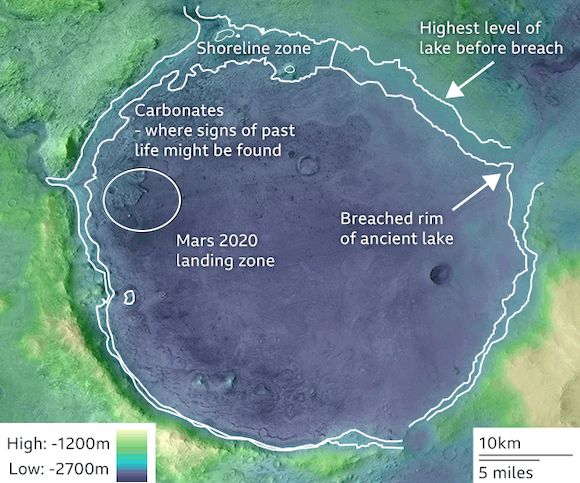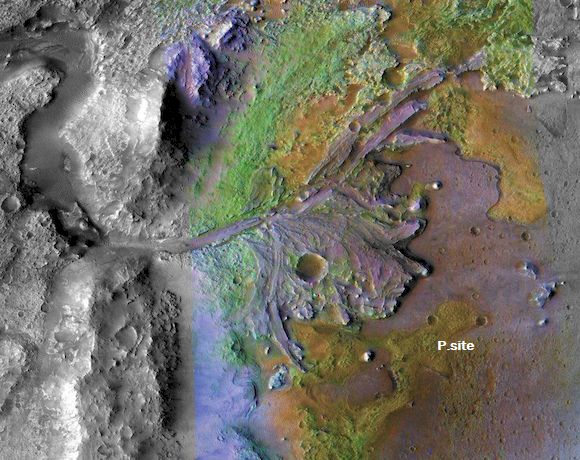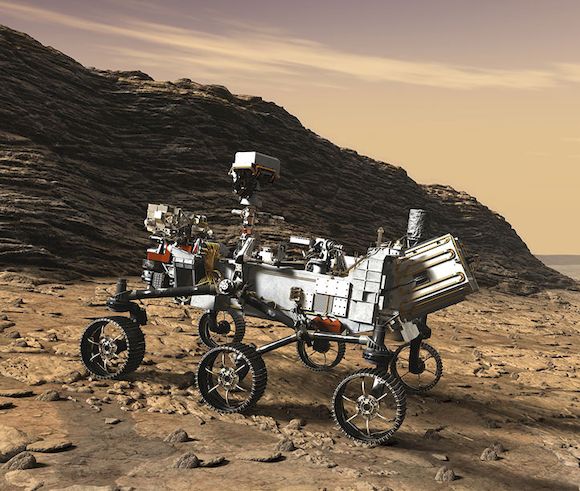Touch down! ... and breathe. Confident they may have been, nevertheless NASA scientists, officials, project engineers and designers, were quite obviously elated and relieved when the latest 2 billion dollar Mars rover; Perseverance, landed safely on Mars at 20:55hrs GMT on February 18th. Using a large parachute, retro thrusters and the highly sophisticated 'sky crane' final delivery system, Perseverance's descent down through the Martian atmosphere and onto the surface seemed to go flawlessly.
The Mars Perseverance rover mission is part of NASA's Mars Exploration Program, a long-term effort of robotic exploration of the Red Planet. The primary objective for Perseverance’s mission on Mars is astrobiology research, not only seeking signs of habitable conditions on Mars in the ancient past, but also searching for signs of past microbial life itself. The rover will characterize the planet’s geology and past climate and be the first mission to collect and cache Martian rock and regolith, storing it in cylinders for future sample-return missions mounted by NASA and ESA (European Space Agency) returning them back to Earth for in-depth analysis, hopefully paving the way for human exploration of the Red Planet.
It is the first mission since the static Viking probes landed on Mars back in the mid 1970's, with a NASA goal of searching for 'signs of life'. Perseverance has the huge advantage of being able to seek out, inspect and experiment in specific locations of scientific interest already identified on the intended route laid out for Perseverance. That route will lead Perseverance through what scientists believe to be a dried up river delta basin spilling from the rim of Jezero crater, which billions of years ago was believed to be a lake through which water flowed, and may still yield microbial tell tale signs below the Martian soil. Jezero Crater is 28 miles (45 kilometers) wide, and is located on the western edge of a flat plain called Isidis Planitia, which lies just north of the Martian equator. The landing site is about 2,300 miles (3,700 kilometers) from Curiosity’s landing site in Gale Crater.
Over the period of at least one Martian year (687 earth days) exploring the Martian surface, Perseverance will: search for rocks that formed in, or were altered by, environments that could have supported microbial life in Mars’ ancient past. Find rocks capable of preserving chemical traces of ancient life (biosignatures), if any existed. Drill core samples from promising rock and “soil” (regolith) targets and caches them on the Martian surface and test the ability to produce oxygen from the carbon-dioxide Martian atmosphere, in support of future human missions.
The extended mission (if everything is still functioning) will see Perseverance make two investigatory/sample return journeys to the delta rim of Jezero crater. Given that NASA's Curiosity rover has just passed Sol 3000 exploring Gale crater and is now in the process of ascending its central mountain peak, Mt Sharp, prospects for Perseverance; which is a slightly scaled up, improved version of Curiosity, having an extended life of perhaps 10 years would not seem out of the question.
Currently 'clinging' to the under belly of Perseverance is a small, lightweight helicopter drone; ingenuity, an experimental demonstrator to see whether they have the ability to fly in the thinner Martian atmosphere. Once a suitable "helipad" location is identified, the rover will release Ingenuity to perform a series of test flights over a 30-Martian-day window beginning sometime in the spring. When eventually deployed and if successful, it will be the first powered flight on Mars, paving the way for larger drones capable of performing science in future missions.
Interesting days lie ahead on Mars then, with two working rovers sending back scientific data and stunning images, and the prospect of headline making news in the not too distant future, it's definitely a case of watch this space.
The space to watch is https://mars.nasa.gov/mars2020/
Or whitby-astronomers.com
All images - NASA
- Log in to post comments

